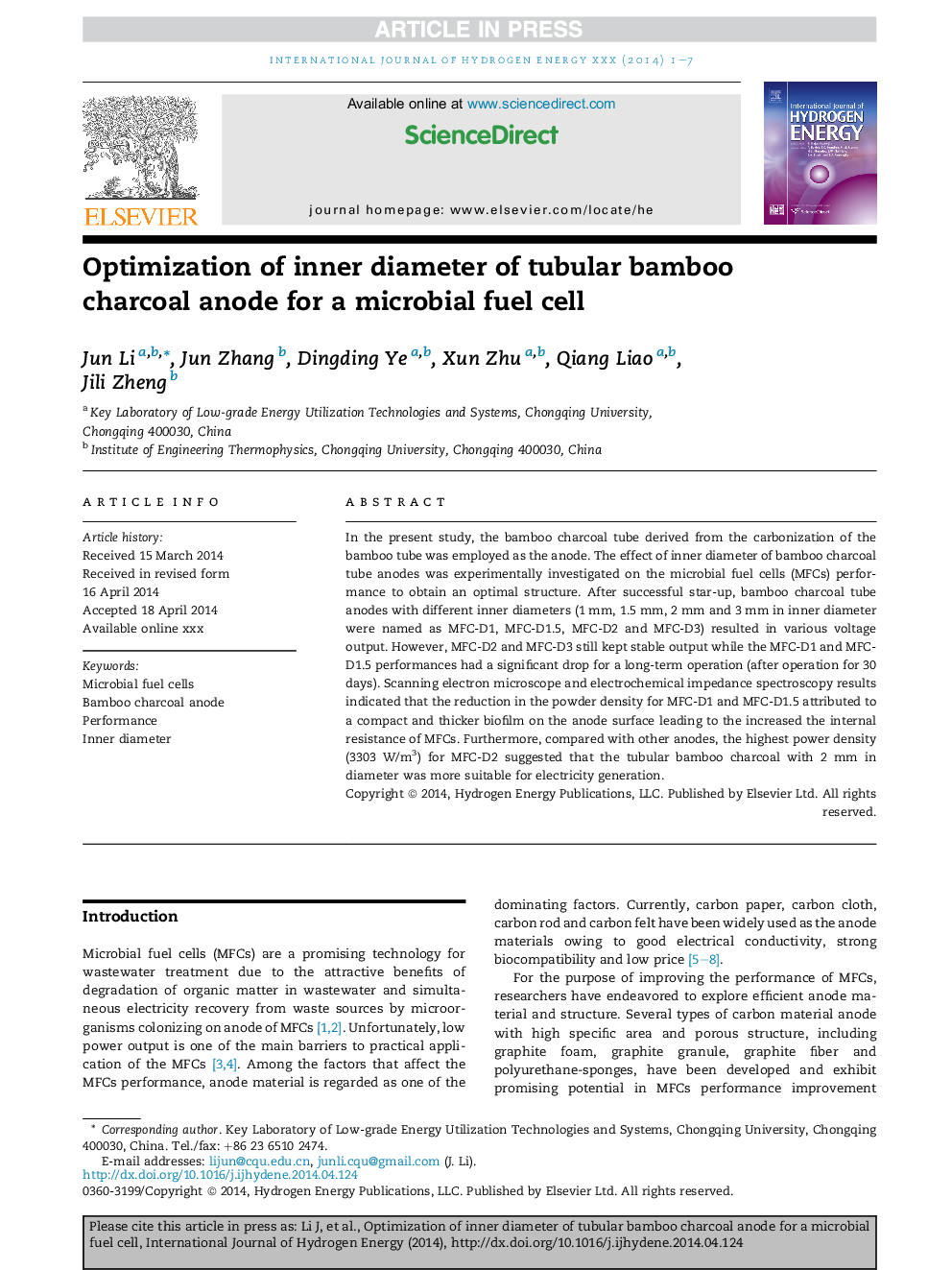| Article ID | Journal | Published Year | Pages | File Type |
|---|---|---|---|---|
| 7717797 | International Journal of Hydrogen Energy | 2014 | 7 Pages |
Abstract
In the present study, the bamboo charcoal tube derived from the carbonization of the bamboo tube was employed as the anode. The effect of inner diameter of bamboo charcoal tube anodes was experimentally investigated on the microbial fuel cells (MFCs) performance to obtain an optimal structure. After successful star-up, bamboo charcoal tube anodes with different inner diameters (1Â mm, 1.5Â mm, 2Â mm and 3Â mm in inner diameter were named as MFC-D1, MFC-D1.5, MFC-D2 and MFC-D3) resulted in various voltage output. However, MFC-D2 and MFC-D3 still kept stable output while the MFC-D1 and MFC-D1.5 performances had a significant drop for a long-term operation (after operation for 30 days). Scanning electron microscope and electrochemical impedance spectroscopy results indicated that the reduction in the powder density for MFC-D1 and MFC-D1.5 attributed to a compact and thicker biofilm on the anode surface leading to the increased the internal resistance of MFCs. Furthermore, compared with other anodes, the highest power density (3303Â W/m3) for MFC-D2 suggested that the tubular bamboo charcoal with 2Â mm in diameter was more suitable for electricity generation.
Related Topics
Physical Sciences and Engineering
Chemistry
Electrochemistry
Authors
Jun Li, Jun Zhang, Dingding Ye, Xun Zhu, Qiang Liao, Jili Zheng,
